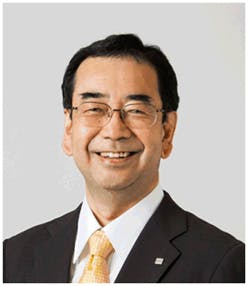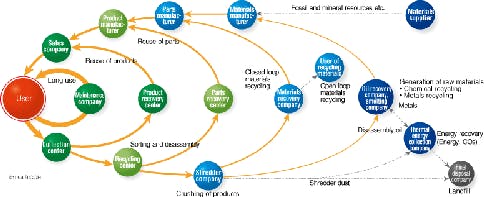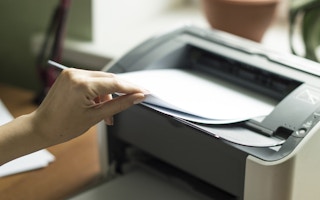The world’s population is expected to soar from 7 billion today to almost 10 billion by 2050. If society has not changed the way it produces and consumes things by then, it will require resources from three planets to survive and this will surpass the earth’s ability to sustain life, says the United Nations Environment Programme (UNEP).
The UN agency warns that many of the earth’s ecosystems that provide water, food, and energy are already near critical tipping points today. This is why living within planetary boundaries is the “most promising strategy for ensuring a healthy future”, says UNEP.
This year, for this year’s World Environment Day on June 5, UNEP has chosen to put the focus on sustainable consumption and production, and breaking the link between economic growth and negative environmental impacts.
To achieve this, businesses have a role to play by doing “more and better with less”, as UNEP puts it in its campaign message. This involves developing new business models that aim to reduce waste, improve energy efficiency, and recover resources back from products at the end of their life cycle.
The circular economy is one concept that has been gaining popularity among businesses and sustainability advocates as a system which achieves economic growth without resource depletion. This economic model eschews the linear trajectory of ‘take, make, waste’ in favour of designing products for reuse, recycling, and resource recovery.
One company that has embraced this new way of doing business is Japanese electronics multinational Ricoh. Not only does it manufacture a wide range of energy efficient office equipment, it also organises a World Environment Day-linked sustainability outreach programme for communities and businesses called Eco Action Day all over the world every year.
Next year, the company will also reach a new milestone when it opens a new RICOH Eco Business Development Centre in Gotemba City, Shizuoka, Japan, where it will conduct research into groundbreaking environmental technologies.

Tetsuya Takano, managing director, Ricoh Asia Pacific
Here, Tetsuya Takano, managing director of Ricoh Asia Pacific, speaks to Eco-Business about why the company’s philosophy is intertwined with sustainability, its approach to reducing the environmental impact of its products across their life cycle, and how the annual Eco Action Day campaign has benefitted the company.
In your 37 years at Ricoh, how have you seen the company’s approach towards sustainability change, and what were the main drivers of this trend?
Love for one’s neighbour, country, and work has been a key part of Ricoh’s corporate philosophy since it was founded in 1936 by Kiyoshi Ichimura.
I believe that all the successors after Mr Ichimura have maintained this spirit and enhanced Ricoh’s corporate social responsibility (CSR) efforts, which focus on: good corporate governance, improving the welfare of society, and sound environmental management.
Our corporate philosophy and CSR goals drive us to focus on using our capabilities as a business to improve lives and sustain our planet through contributions to local communities and society at large.
A key example of Ricoh’s CSR leadership is the company’s commitment to reduce its use of toxic substances in its products in the early 1980s, when the world was just beginning to recognise the threat posed by Freon gas to the ozone layer. In addition to changing the chemicals used in its products, Ricoh also put more emphasis on sustainability and reducing the energy consumed by its products and processes.
Also, in 1992, the United States’ Environmental Protection Agency introduced the Energy Star programme, which influenced Ricoh to develop office machines which consume less power.
Ricoh already has numerous sustainability schemes in place, such as the Comet Circle, which looks at a reducing the environmental impact of a product across its life-cycle. One emerging concept among businesses - the circular economy - also promotes a life-cycle approach to product design. How does this new concept fit into Ricoh’s existing business model and operations?

Click to enlarge: Ricoh’s 1994 Comet Circle concept. Image: Ricoh
The circular economy thinking is very relevant to Ricoh’s business model and operations.
The Comet Circle concept, introduced in 1994, maps out the potential impact of a Ricoh product right from the resource extraction stage to the manufacturing process in Ricoh’s factories, how it is used and maintained by customers, and how it is ultimately disposed of or recycled.
As a manufacturer, we are aware that how we design our product at the early stage of its life-cycle can drastically reduce its environmental impact. The Comet Circle concept guides us on how to minimise the environmental impact of resource extraction, energy consumption, chemical discharges, emissions and other activities.
Although the concept did not include some aspects that characterise circular economy thinking today - such as the design of special materials that are easy to recycle and reuse - Ricoh has always put its focus on promoting sustainable environmental management and contributing to environmental conservation while at the same time generating profits.
We focus on areas such as developing energy efficient products and promoting a work style that improves operational and energy efficiency, among other things.
As part of this effort, we will launch the new Ricoh Eco Business Development Centre in Gotemba City, Japan, next year. Here, we will conduct trial studies of environmental technologies, develop reuse and recycling technologies, and implement and optimise these technologies to create new businesses that extend beyond the boundaries of our conventional business domains.
Consumer behaviour accounts for a big part of the shift to greater resource efficiency and waste reduction. How does Ricoh engage its customers to support its recycling and resource recovery objectives?
“
Balancing sustainable behaviours with convenience, optimising technology, and cultivating resource-efficient working practices are areas where everyone should put in effort to achieve change for a better future.
As the manufacturer, we offer customers a selection of sustainable options including: refurbished products with recycled parts, products which optimise the use of returnable eco-friendly packaging, and energy-saving devices with environmental impact monitoring and reporting solutions.
Examples include printers with double-sided printing capabilities, paperless faxes which send fax messages directly to email, and the Unified Communication System, a web conferencing system that incorporates video, audio, documents, and other media, and helps executives shrink their carbon footprint by avoiding business travel.
Ricoh also enables customers to keep track of how much energy and paper their multi-function printers and laser printers they are using through a central monitoring solution called the Total Green Office Solution.
Finally, Ricoh’s take-back programme for empty toners and used machines for proper recycling closes the product life cycle loop.
Ricoh aims to reduce the input of new resources by 25 per cent by 2020 and by 87.5 per cent by 2050 from the level of 2007. How has progress on these goals been, and what have some of the main challenges of reducing resource use been?
We are working progressively towards our goals. We certainly face challenges, particularly where customers’ usage patterns are concerned. Despite the growing trend towards sustainable working environments, customers may not always prioritise saving energy and resources.
For example, sometimes they disable the eco-saving mode present on machines in order to speed up their print job. Or, they may still use physical paper invoices instead of paperless billing. And even though services to collect and properly dispose used toner cartridges are readily available, not all companies use them.
Balancing sustainable behaviours with convenience, optimising technology, and cultivating resource-efficient working practices are areas where everyone should put in effort to achieve change for a better future.
What is your outlook on how the electronics sector in Asia will fare on sustainability in the coming few decades?
Asia plays an important role. The region is home to many rapidly growing economies such as India, China, Indonesia and Vietnam among others, all of which have growing populations and are seeing a rapid increase in energy demand.
Many Asian and international companies have production plants and engineering facilities in the region, and it is their responsibility as good corporate citizens to minimise the environmental impact of processes such as resource extraction, energy consumption, chemical discharges and emissions.
Companies in the region’s electronics sector – including Ricoh – are also keen on developing products which consume less power.
Governments in Asia also have an important role to play in driving sustainability – the right policies can help improve the efficiency of natural resource usage in a country, and ensure that the environmental impact of manufacturing industries is minimised.
It is our goal that governments and companies work together to achieve a sustainable society. I think an environmental action plan developed by all Asian countries to pursue goals such as expanding sustainable businesses, and driving the development of circular economy business models would be a valuable development in the region.
How has the Eco-Action Day campaign, which Ricoh has run for nine years in Singapore, been valuable to the company?
Eco Action Day means a lot to us. This initiative is part of Ricoh’s wider CSR effort. Kick-starting this journey in 2007 was not easy, and sustaining the campaign and continually improving it has been even harder.
But over the years, we have seen organisations from many different sectors have come on board in an effort to make a difference to the environment. Last year, the campaign received a record total of 180 organizations and 300 individual pledges, which was very heartening.
As an organisation that constantly deals with customers’ needs from various industry sectors, we value the campaign’s ability to help us inspire our customers and act as a catalyst to fulfill their responsibility to building a sustainable society.
Companies, schools, and individuals can be a part of Eco Action Day by pledging actions to reduce your environmental impact. Click here to pledge your Eco Action today.


















